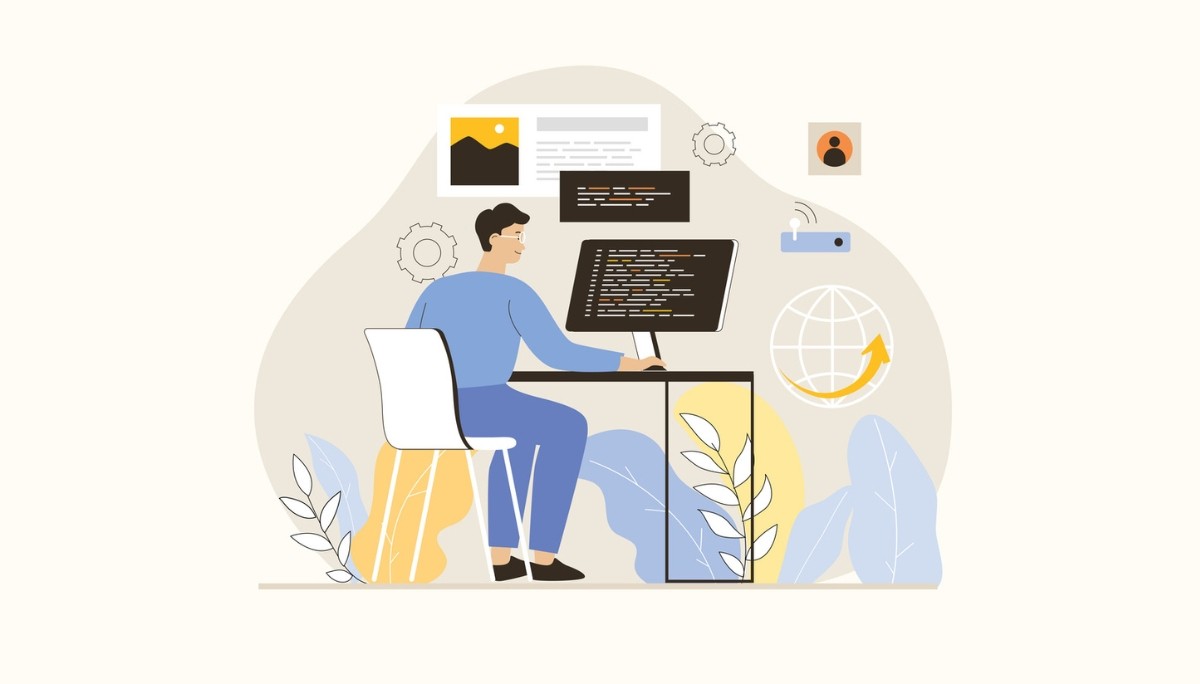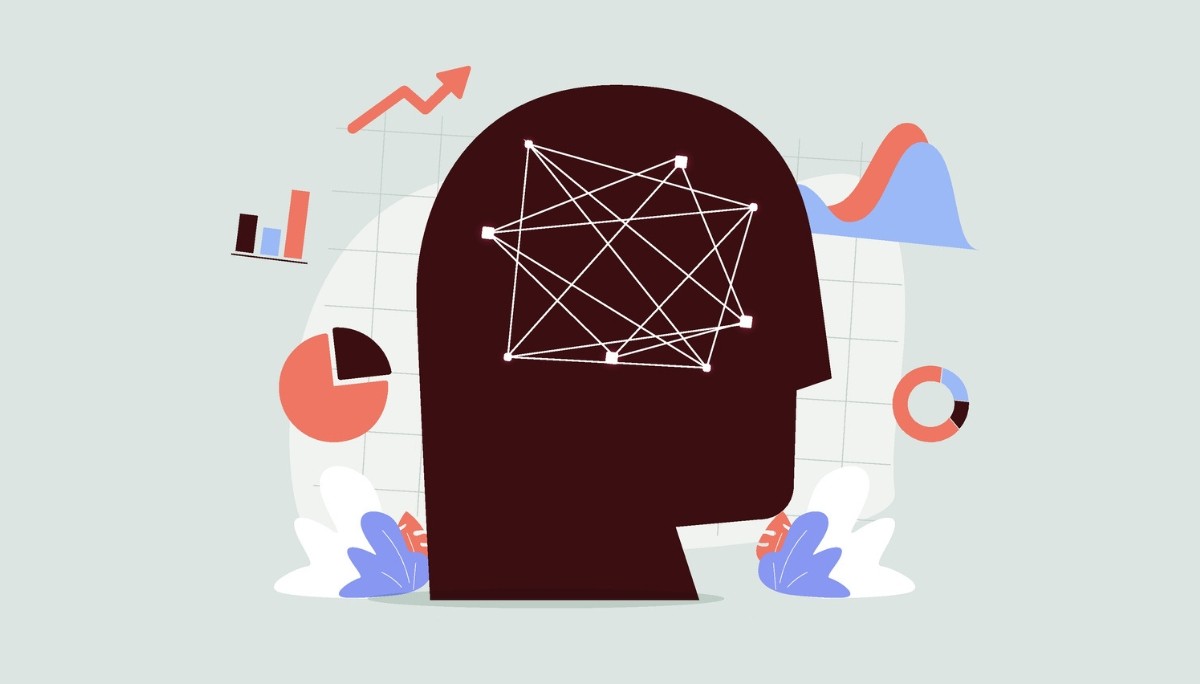How to Build an AI Engineer Portfolio: Tips, Examples & GitHub Projects
By
Samantha Cox
•
Jun 16, 2025
Hiring managers don’t just want to see your resume, they want to see what you’ve built. If you’re an AI engineer, your portfolio is your proof of work. It shows how you think, how you code, and whether you can ship something real. What separates a forgettable portfolio from one that lands interviews? It comes down to the right projects, presentation, and a clear signal of your skills. Here’s how to build one that stands out.
Key Takeaways
A strong AI engineer portfolio is essential to showcase your practical skills and creativity, making you a more attractive candidate to employers.
Include diverse projects with clear documentation, personal introductions, and key achievements to effectively demonstrate your capabilities and experiences.
Utilize platforms like GitHub for showcasing your work, and engage in activities like mock interviews and hackathons to enhance your visibility and prepare for job opportunities.
Understanding the Importance of an AI Engineer Portfolio

You’ve learned the theory. Now it’s time to show you can build. A sharp AI portfolio is how you make that leap. A portfolio demonstrates to employers what a machine learning engineer is capable of in terms of implementation and design. It testifies to your ability to apply machine learning principles to solve real-world problems, showcasing creativity and problem-solving skills.
A portfolio is not just a resume; it’s a living document that reflects your skills, interests, and experiences. A well-structured portfolio ensures easy navigation and readability, making it accessible for hiring managers who may only have a few minutes to review your work. The uniqueness of your portfolio is paramount. While it’s tempting to emulate others, it’s crucial to showcase your distinct abilities and projects.
Landing a job in machine learning without a portfolio is significantly harder. A thoughtfully curated portfolio can elevate your reputation, making you a more attractive candidate to potential employers. Standing out in a crowded field, it provides tangible evidence of your expertise and dedication to artificial intelligence.
Key Elements of a Strong AI Engineer Portfolio

A strong AI engineer portfolio is a blend of various elements that together paint a comprehensive picture of your capabilities. It’s not merely about listing projects but demonstrating your problem-solving skills, creativity, and proficiency in various areas of artificial intelligence. Your portfolio should highlight a diverse range of projects that reflect your adaptability and technical prowess.
Effective documentation is crucial. Each project should be well-documented, detailing the problem, methodologies, and results, along with visual aids for better understanding. Including research achievements, such as awards, completed courses, and testimonials, can further impress potential employers.
Additionally, showcasing involvement in volunteer work can demonstrate your team and experience in larger projects.
Personal Introduction and Background
Start with a personal introduction that covers your name, background, and work experience in machine learning. This section should also highlight any personal projects that you have undertaken, focusing on key achievements in the field. A good portfolio, for instance, includes an interactive timeline of your past work and education, effectively showcasing your educational background.
Detailing your journey into AI engineering can add a personal touch to your portfolio. Another example is someone who specializes in MedTech and AI solutions, providing a narrative that resonates with their specialization. This personal touch not only makes your portfolio more engaging but also helps potential employers understand your passion and dedication to the field.
Skillsets and Tools Proficiency
Listing your proficiency in programming languages, frameworks, and algorithms relevant to AI is essential for a software engineer. This gives potential employers a clear view of your technical skills and capabilities. For instance, someone who is skilled in programming languages such as Python, C++, and Java, as well as deep learning frameworks.
It’s also important to detail the tools you’ve used in your projects, as this provides insight into your project methodology and choices. Including a GitHub profile is crucial for showcasing projects and demonstrating coding skills to potential employers.
Ensure your website features detailed project descriptions and a clear approach to write your work.
Highlighting Your Best Projects
Your portfolio should include:
Links to your best projects, emphasizing their importance and impact.
Projects organized in an iPython Notebook format to enhance interactivity and engagement.
Each project having a separate pop-up page with detailed descriptions and technologies used, keeping your portfolio organized.
To effectively present your projects to potential employers, consider the following:
Clearly articulate the outcomes and significance of each project to help potential employers understand their value.
Highlight your analytical skills by comparing models and methods used in various projects.
Provide work-in-progress updates for each project to illustrate your dedication and continuous improvement.
Showcasing Machine Learning Models and Algorithms

Showcasing your machine learning models and algorithms is a critical component of your portfolio. It demonstrates your practical experience, problem-solving skills, and proficiency in developing machine learning projects. Highlighting the impacts of your projects with quantifiable results adds significant value to your portfolio.
Include projects that involve real-world data applications and deep learning models to reflect your ability to handle complex tasks. Utilizing GPUs for machine learning has become vital due to their ability to accelerate complex computations, making them essential in AI development.
GitHub is recommended as the platform for showcasing your machine learning portfolio.
Real-World Data Applications
Select projects for your portfolio that tackle authentic problems using publicly available datasets or collaborations with local organizations. Sentiment analysis for marketing, for example, can reveal customer preferences and guide product improvements. Toxic comment classification is another important NLP challenge that can help mitigate negative interactions on social media.
Text classification projects typically involve categorizing text into predefined labels based on the content and context. These projects demonstrate your ability to apply machine learning algorithms to real-world problems, showcasing your skills as a data scientist and machine learning engineer with the use of words.
Deep Learning and Neural Networks
Deep learning projects should highlight your ability to implement complex architectures and handle large datasets effectively. Utilizing pre-trained models like ResNet helps improve accuracy in projects for detecting plant diseases.
These projects demonstrate your expertise in artificial intelligence and machine learning algorithms, showcasing your skills in deep learning and neural networks. Providing detailed descriptions of the models and methods used in your projects can further enhance your portfolio’s impact.
Incorporating Computer Vision Projects
Including computer vision projects in your portfolio can significantly enhance its visibility and demonstrate your technical skills in technology through visualization. These projects often involve real-world applications, such as the Drive AI warning system for drivers.
Highlight projects that involve image recognition, classification, and object detection to showcase your proficiency in machine learning models and algorithms. These projects reflect your ability to implement and integrate advanced AI technologies into practical solutions.
Image Recognition and Classification
Image recognition and classification projects are essential for demonstrating your skills in computer vision. The Happy Dog Detector project, for example, aims to localize happy dogs in images and videos, predicting their happiness based on detected facial features.
The Happy Dog Classifier uses a CNN model with ResNET50-like residual blocks for improved feature extraction. These projects showcase your ability to implement complex machine learning algorithms and achieve high accuracy in image recognition tasks.
Object Detection and Tracking
Object detection and tracking projects play a vital role in various AI applications, particularly in tracking moving objects in video feeds. Multi-object tracking in a youtube video requires implementing algorithms such as YOLO or Faster R-CNN for effective real-time performance.
These projects demonstrate your ability to handle challenges such as occlusion, varying lighting conditions, and the need for real-time processing capabilities. Including such projects in your portfolio highlights your skills in computer vision and deep learning.
Emphasizing Natural Language Processing (NLP) Projects

Natural Language Processing (NLP) projects are crucial for showcasing your skills in understanding and processing human language. These projects demonstrate your ability to apply machine learning models and algorithms to text data.
Highlight projects that involve large language models and sentiment analysis to reflect your proficiency in deep learning and NLP techniques. These projects can include applications such as text generation, summarization, and question-answering.
Large Language Models and Transformer Models
Large Language Models (LLMs) are designed to process extensive text datasets and can produce coherent text outputs. NLP projects often involve tasks like text generation, summarization, and question-answering, demonstrating a range of capabilities.
These projects showcase your ability to work with advanced machine learning models and algorithms, reflecting your expertise in deep learning and NLP. Including such projects in your portfolio highlights your skills in handling complex data analysis tasks.
Sentiment Analysis and Text Classification
Sentiment analysis and text classification projects are essential for demonstrating your skills in data analysis and statistics. A Multinomial Naive Bayes classifier, for example, can predict the number of stars from Yelp reviews, illustrating a practical application of sentiment analysis.
These projects showcase your ability to apply machine learning algorithms to real-world problems, reflecting your expertise in deep learning, data analysis, and data science. Including such projects in your portfolio highlights your skills in understanding and interpreting text data.
Demonstrating Experience with Distributed Training and GPU Computing
Demonstrating experience with distributed training and GPU computing is crucial for an AI engineer. Utilizing GPU orchestration can significantly enhance MLOps, allowing for distributed training and efficient serving of complex models.
The architecture of GPUs makes them more cost-effective in large-scale AI applications, where a single GPU can outperform multiple CPUs for specific tasks. Including projects that involve distributed training and GPU computing highlights your ability to handle large-scale AI applications and complex computations.
Practical Tips for Building and Presenting Your Portfolio

Building and presenting an effective AI engineer portfolio requires careful planning and execution. Your portfolio should be well-structured, showcasing your technical skills, practical experience, and enthusiasm for machine learning.
Avoid common pitfalls such as lack of focus, presenting irrelevant projects, and poor presentation. Ensuring your portfolio loads quickly and is easy to navigate allows hiring managers to access information easily and efficiently.
Creating a Professional Website or Blog
Creating a professional web site or blog allows you to showcase your portfolio and projects effectively. Include favorite machine-learning topics and project ideas to create engagement with potential employers.
Consider using platforms like Medium for posting articles about machine learning topics. An interactive timeline can effectively showcase your work and education history, making your portfolio more engaging.
Utilizing GitHub for Maximum Impact
Utilizing GitHub is essential for maximizing the impact of your AI engineer portfolio. Here are some key practices:
Include detailed project descriptions and links to your best projects to make them easily accessible for reviewers.
Organize your GitHub repositories with clear structures.
Add README files to enhance the visibility of your projects and make it easier for hiring managers to understand your work.
Linking your GitHub profile on your portfolio allows potential employers to explore your source code and see your coding abilities firsthand. Ensure that your repositories are well-documented, showcasing your ability to communicate complex technical details effectively.
Preparing for Interviews and Showcasing Skills
Preparing for interviews is a critical step in showcasing your skills and landing a job in the competitive field of artificial intelligence. Participating in hackathons or coding competitions can help you demonstrate your skills and gain valuable experience. Seeking feedback from a mentor before publishing your portfolio can refine your message and offer insights on how others perceive your work.
When presenting your machine learning model, highlight the outcomes and influencing factors, such as outliers or anomalies. Employers need a way to contact you about your projects, so ensure that your portfolio includes clear contact information.
Mock Interviews and Technical Challenges
Conducting practice interviews can help you familiarize yourself with the types of questions you might get and alleviate anxiety. AI-driven mock interviews can offer tailored feedback based on individual performance, helping you pinpoint areas for improvement.
Participating in coding challenges is crucial as it allows you to practice problem-solving under time constraints, mirroring the pressure of actual interviews. Utilizing online platforms that simulate technical interviews can provide valuable feedback and help refine your problem-solving strategies.
Presenting Projects and Handling Questions
Anticipating common questions about your projects allows you to respond confidently and provide insightful explanations. Practicing responses to potential questions can boost your confidence and ensure clarity during interviews. Engaging in mock interviews helps you familiarize yourself with the interview format and reduces anxiety by simulating real interview conditions.
When presenting your projects, consider the following:
Highlight key achievements and outcomes.
Be prepared to discuss the methodologies and technologies used.
Explain any challenges you faced and how your project demonstrated how you overcame them.
This demonstrates your ability to handle challenging complex problems and your resilience in the face of obstacles and risk that you have developed, as expected.
How Fonzi Enhances the Hiring Process for AI Engineers
Fonzi is revolutionizing the hiring process for AI engineers by leveraging artificial intelligence to minimize biases and standardize candidate evaluations. Fonzi uses AI-driven methods to ensure a more equitable evaluation of candidates, connecting high-quality AI engineers with leading companies.
Fonzi’s structured hiring process reduces bias, protects candidate experience, and speeds up the hiring timeline. This human-centered approach allows hiring managers to focus on the fine tuned people behind the resumes, ensuring a positive and efficient hiring experience.
Match Day: Getting in Front of Top-Tier Companies
Match Day puts top AI engineers in front of the world’s leading tech companies. Key features include:
Direct exposure to major employers, facilitating faster connections to potential job opportunities.
A high-signal, efficient event format.
Presentation of multiple job opportunities to candidates.
The ability for candidates to choose the best fit based on salary and role.
Match Day minimizes the effort involved in job searching, as candidates receive multiple offers from top companies. This direct connection to leading employers can significantly enhance your visibility and increase your chances of landing your dream job in artificial intelligence.
Protecting Candidate Experience and Speeding Up Hiring Timeline
Fonzi is committed to enhancing candidate experience and expediting the hiring process. Fonzi streamlines the hiring process using artificial intelligence, ensuring a smooth and efficient experience for candidates. Reducing bias in hiring contributes to a more equitable candidate experience, ensuring that all candidates are evaluated fairly.
Match Day allows candidates to get in front of top-tier companies efficiently, speeding up the hiring process and reducing the time spent job searching. Overall, Fonzi’s approach to hiring not only protects candidate experience but also ensures a quicker and more effective hiring timeline.
Summary
Building a strong AI engineer portfolio is essential for showcasing your skills and standing out in a competitive job market. By including key elements such as personal introductions, skillsets, and detailed project descriptions, you can create a comprehensive and impactful portfolio. Highlighting your best projects, showcasing machine learning models, and incorporating diverse projects like computer vision and NLP can further enhance your portfolio’s appeal.
Preparing for interviews and utilizing platforms like GitHub and Fonzi can significantly increase your chances of landing your dream job. Fonzi’s AI-driven hiring process and events like Match Day provide unique opportunities to connect with top-tier companies and streamline the hiring process. Take these insights and start building a portfolio that not only showcases your technical abilities but also tells your unique story.




